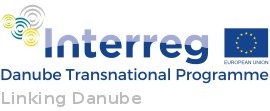Linking Danube deals with insufficient provision of cross-border traveller information on public transport, particularly considering cross-border commuting and mobility in rural areas. The overall project objective is to foster environmentally-friendly mobility options and balanced accessibility in the Danube Region through transnational, interoperable and multimodal journey planning in urban and rural areas. Currently no suitable multimodal, transnational system for travellers exists anywhere in Europe. Linking Danube especially focuses on connecting less accessible areas to the TEN-T network by linking alternative public transport services and integrating demand transport data into the services.
One main output is the LinkingDanube Concept for transnational, multimodal journey planning services. The Concept shall serve as input both for the technical development work within LinkingDanube as well as for uptake by project externals. The LinkingDanube Service (Technical Tool) will build on existing systems and will be implemented in a decentralised way ensuring high-quality data. All decentralised journey planners can be addressed through an open interface, ensuring transnational routing via one central application operated by end-user service providers.
The Pilot Action will demonstrate feasibility and functionality of the  LinkingDanube concept, including both integrating rural public transport services in the information flow of national/regional journey planners and linking services for cross-border service provision.
LinkingDanube concept, including both integrating rural public transport services in the information flow of national/regional journey planners and linking services for cross-border service provision.
LinkingDanube is co-funded by the Danube Transnational Programme of the European Union.
For more information click on Project website.

